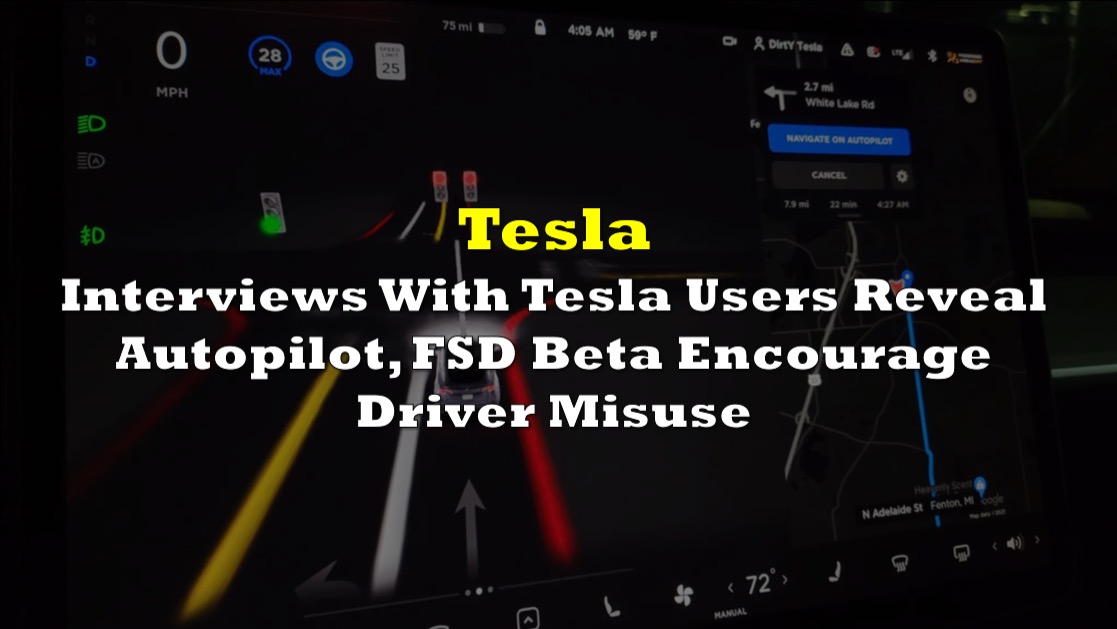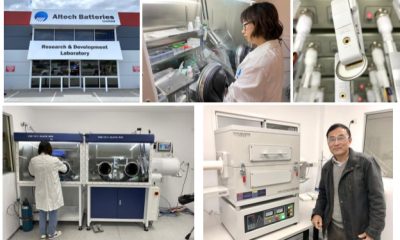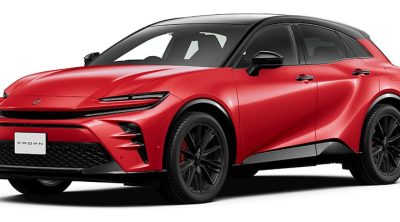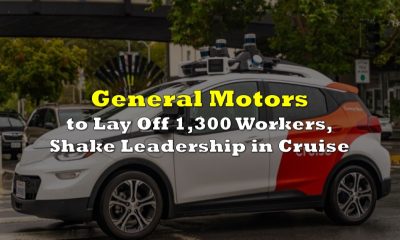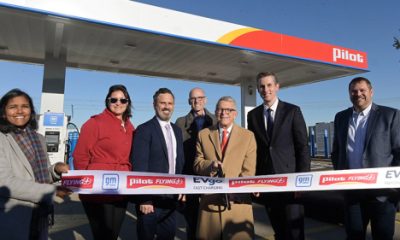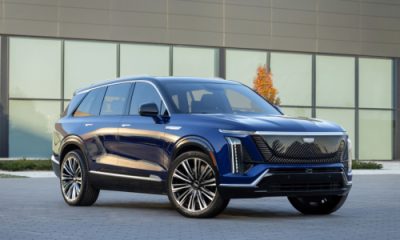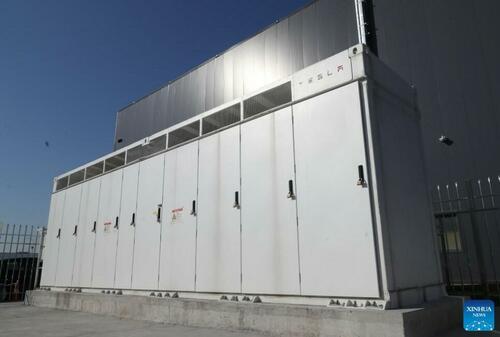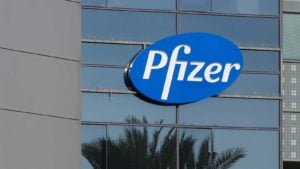Energy & Critical Metals
Study On Tesla Users Reveal Autopilot, FSD Beta Encourage Driver Misuse
A research paper by proponents from Delft University of Technology highlighted the growing complacency and unideal behavior being encouraged by
The post…
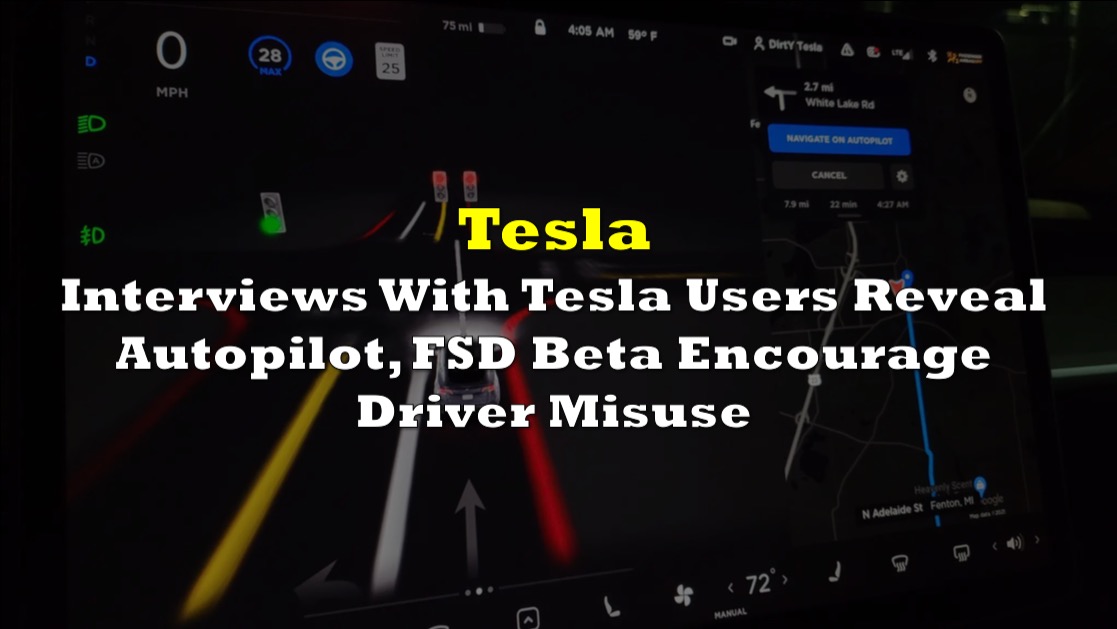
A research paper by proponents from Delft University of Technology highlighted the growing complacency and unideal behavior being encouraged by Tesla’s (Nasdaq: TSLA) standard Autopilot and Full Self-Driving (FSD) Beta program.
This study presents the results of 103 in-depth interviews with drivers whose vehicles were outfitted with Tesla’s FSD Beta and standard Autopilot to investigate the driver’s direct short-term and indirect long-term behavioral adaptations to using Autopilot and FSD Beta, as well as changes in the driver’s travel behavior.
Tesla’s Autopilot is one of the most capable and much discussed partially automated driving technologies available to drivers in production vehicles worldwide. The carmaker launched its FSD Beta program in October 2020, which is an SAE level 2 partially automated driving system that extends the operational design domain (ODD) of standard Autopilot—allowing the car to drive in automated mode on non-highway roads while being constantly monitored by human drivers.
“The direct short-term behavioral adaptation of drivers pertained to an increase in situational awareness with Autopilot engaged, a decrease in mental and physical workload and stress with Autopilot engaged, but an increase in workload and stress with FSD Beta engaged,” the paper concluded.
Respondents reported focusing more on the vehicle’s surroundings while Autopilot was activated and more on the road ahead when FSD Beta was activated, correlating with studies that indicated higher situational awareness when automated driving was activated.
However, the driver’s position moving to that of a passenger with the systems active, as well as cases of overreliance, complacency, hands-free, mind-off, and fatigued driving, may reduce drivers’ actual situational awareness, even if they claim greater situational awareness.

© 2023 Nordhoff, Lee, Calvert, Berge, Hagenzieker and Happee
This study also discovered a reduction in physical and mental workload when Autopilot was engaged, as well as a reduction in driver weariness and an increase in relaxation as a result of Autopilot taking over tactical and operational aspects of highway driving. In comparison to Autopilot, FSD Beta increased workload due to unfinished automated driving technology and the resulting necessity to constantly watch the system, being ready to take over control at any time as the system may do the wrong thing at the worst possible time.
In addition, respondents indicated less stress when Autopilot was enabled due to Autopilot taking over the lateral and longitudinal portions of the driving task on highways, however those who drive with FSD Beta engaged reported more stress.
“Just like Autopilot in an aircraft. It lets you relax a little bit so now you’re not having to directly fly the plane, but you still monitor. With Beta typically, when I turn it on, it adds more stress,” said one of the research’s respondents.
Indirect effects
“The use of Autopilot and FSD Beta induced some indirect, unintended, and potentially dangerous behavioral changes in drivers. Some behaviors represent knowing violations of intended use (e.g., weighting the steering wheel, using Autopilot in ODD’s not designed for), and others reflect misunderstanding or lack of experience (e.g., using Autopilot in ODD’s not designed for),” the paper also noted.
Respondents reported utilizing Autopilot in ODDs for which it was not meant owing to a lack of information about the ODDs for which it can be used, overconfidence, apparent system competence, or to experience and test the system’s limits.
“I used it from the start, and then noticed very quickly that I can use Autopilot also on roads other than freeways,” the paper quoted one of its interviewees.
The study also demonstrates complacency with Autopilot but not with FSD Beta. Respondents admitted to becoming complacent over time, taking their eyes off the road for quite extended periods of time (e.g., 44 miles without looking up), and engaged in secondary activities (e.g., working on a laptop). It also showed evidence of one-handed, hands-free, and mind-off driving–the latter being characterized as “drivers reporting engaging in mind wandering or even falling asleep behind the steering wheel when Autopilot was engaged.”


“The hands-on feature is a very clumsy method in my opinion of ensuring driver attention. I’d much rather be on the road with someone whose hands are off the steering wheel, but they’re paying attention than someone who’s hand is resting on the steering wheel, but they’re checking their email,” answered one of the respondents.
Overall, the study concluded that “the use of Autopilot and FSD Beta resulted in unintended positive and negative changes in user behavior.”
“Drivers became complacent over time with Autopilot engaged… The risk of complacency and unsafe behavior was high in simple highway environments,” the paper wrote.
The paper was written by proponents from the Department Transport and Planning of Delft University of Technology in Delft, Netherlands.
Following the recent surprising Tesla recall for their FSD vehicles, it appears the electric vehicle giant did not disclose the National Highway Traffic Safety Administration requests for a recall in its most recent earnings. Instead, the firm announced some more than $1 billion in deferred revenue from FSD in its latest release.
Information for this briefing was found via the sources mentioned. The author has no securities or affiliations related to the organizations discussed. Not a recommendation to buy or sell. Always do additional research and consult a professional before purchasing a security. The author holds no licenses.
The post Study On Tesla Users Reveal Autopilot, FSD Beta Encourage Driver Misuse appeared first on the deep dive.

Uranium Exploration Company Announces Additional Staking in the Athabasca Basin
Source: Streetwise Reports 12/22/2023
Skyharbour Resources Ltd. announced an update from its Canada-based Falcon Project along with additional…
Tesla Launches New Mega Factory Project In Shanghai, Designed To Manufacture 10,000 Megapacks Per Year
Tesla Launches New Mega Factory Project In Shanghai, Designed To Manufacture 10,000 Megapacks Per Year
Tesla has launched a new mega factory…
Giving thanks and taking stock after “a remarkable year”
An end-of-year thank you to our readers, industry colleagues and advertisers before Electric Autonomy breaks from publishing until Jan. 2
The post Giving…
